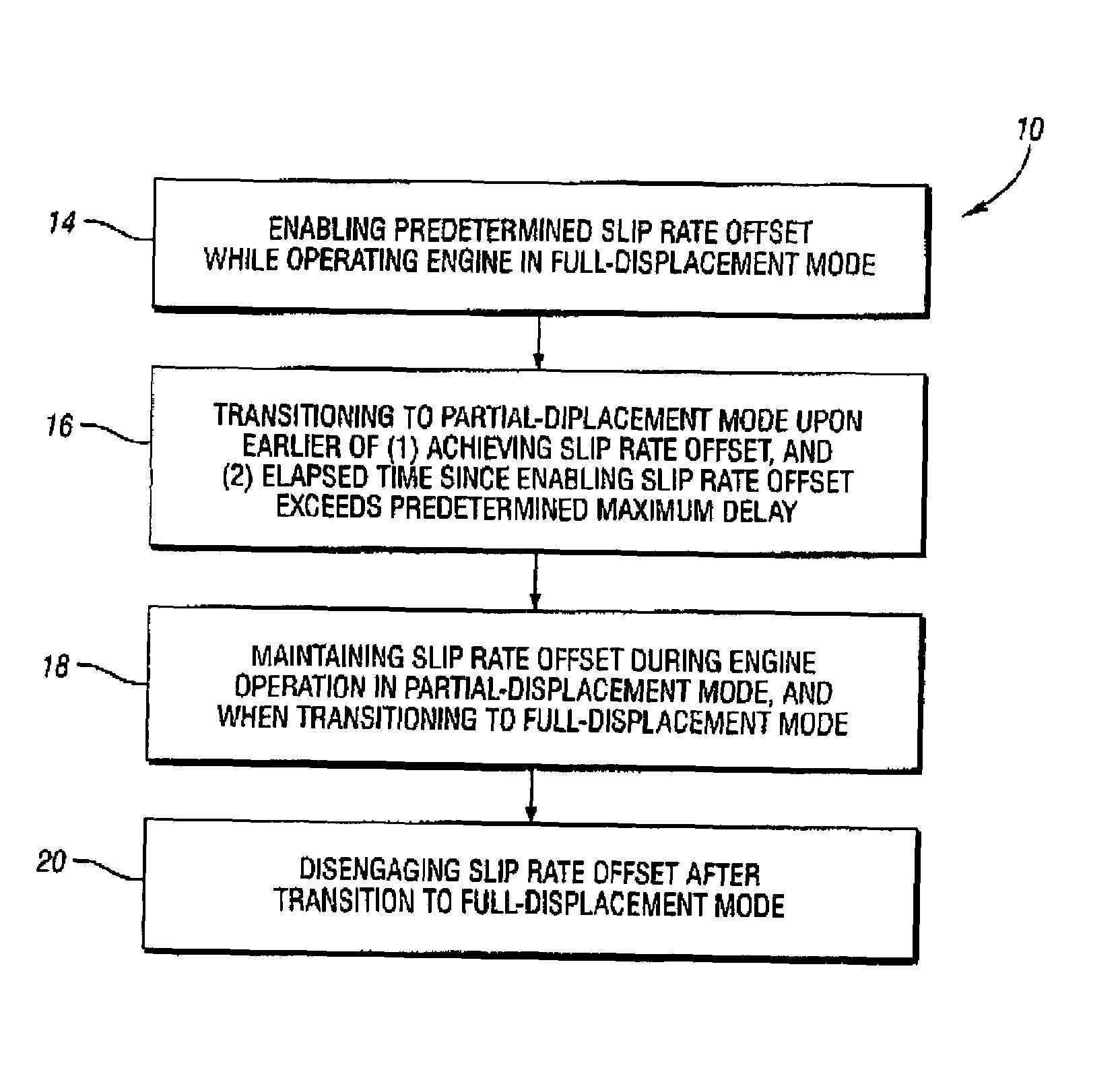Torque converter slip control for multi-displacement engine
a technology of torque converter and multi-displacement engine, which is applied in the direction of gearing control, gearing elements, gearing rings, etc., can solve the problem of reducing the system's transparency to vehicle passengers
- Summary
- Abstract
- Description
- Claims
- Application Information
AI Technical Summary
Benefits of technology
Problems solved by technology
Method used
Image
Examples
Embodiment Construction
[0014]A method 10 for controlling slip in a torque converter coupled to a multi-displacement engine is generally illustrated in FIG. 1, while an exemplary plot 12 of torque converter slip rate versus time, illustrating a current torque converter slip rate SRcur as the engine transitions from a full-displacement mode to a partial-displacement mode, and again back to a full-displacement mode, is shown in FIG. 2. While the invention contemplates any suitable hydraulic and / or electromechanical system for deactivating the given cylinder, including deactivatable valve train components, a constructed embodiment features an eight-cylinder engine in which four cylinders are selectively deactivated through use of deactivatable valve lifters as disclosed in U.S. patent publication no. US 2004 / 0244751 A1, the teachings of which are hereby incorporated by reference.
[0015]As seen in FIGS. 1 and 2, the method 10 generally includes enabling, at block 14, a predetermined torque converter slip rate o...
PUM
 Login to View More
Login to View More Abstract
Description
Claims
Application Information
 Login to View More
Login to View More - R&D
- Intellectual Property
- Life Sciences
- Materials
- Tech Scout
- Unparalleled Data Quality
- Higher Quality Content
- 60% Fewer Hallucinations
Browse by: Latest US Patents, China's latest patents, Technical Efficacy Thesaurus, Application Domain, Technology Topic, Popular Technical Reports.
© 2025 PatSnap. All rights reserved.Legal|Privacy policy|Modern Slavery Act Transparency Statement|Sitemap|About US| Contact US: help@patsnap.com



